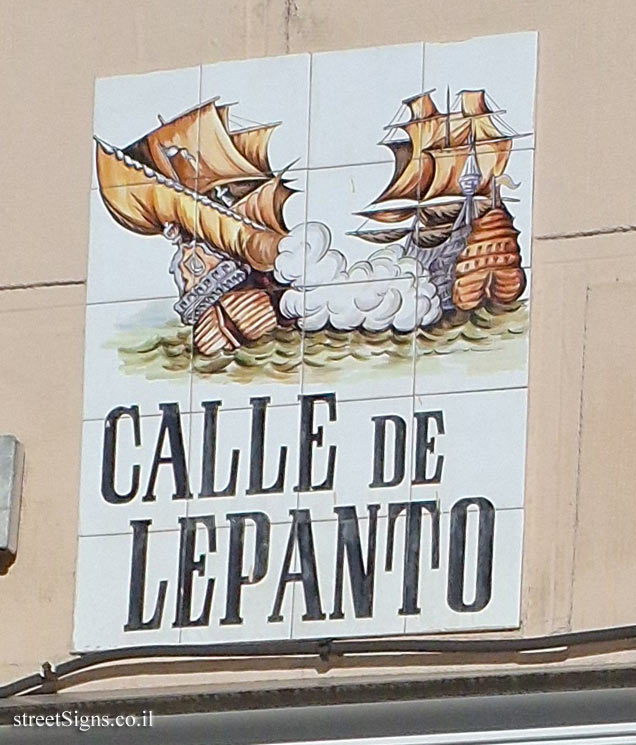One of the signs placed in Madrid as part of the "Prado Museum-Palacio de Oriente Tourist and Cultural Pedestrian Axis", a collaboration between the City of Madrid and the Ministry of Public Works. The project won the 2003 Europa Nostra Prize for Urban Planning for Heritage Conservation.
On the sign located on the street named after the Battle of Lepanto (1571), a naval battle between the Christian Holy League (Venice, Spain and the Papal States) and the Ottoman Empire, fought near the Greek city of Lepanto. The battle ended in the victory of the Christian Holy League, and the weakening of the Ottomans in the Mediterranean.
 Click for sign's details
Click for sign's details The sign is mainly dedicated to the participation of the writer Miguel de Cervantes in the battle, in which he was wounded in the hand.
The place where the sign stands was photographed on the same day
 Click for a larger image Translation of the text on the sign
Click for a larger image Translation of the text on the sign:
PEDESTRIAN, TOURIST, AND CULTURAL STREET
PI.ORIENTE
[Illustration of the battle]
BATTLE OF LEPANTO
On October 7, 1571, the fleet of the Holy League, under the command of John of Austria, defeated the Holy Roman Empire commanded by Admiral Ali Baja. Miguel de Cervantes was embarked as a volunteer on the galley Marquese, one of the Christian ships of the combined Spanish, Venetian, and Papal fleet. He fought there, contracted fever, and was wounded by three scythe shots, two in the chest and one in the left hand, resulting in the loss of the use of his left hand. The battle was considered the greatest occasion the Stalos had ever seen. After the renovation of the Plaza de Oriente in 1846, the city council dedicated this street to that naval victory.
EMVS of the Madrid City Council. (Empresa Municipal de la Vivienda y Suelo de Madrid) - Municipal Housing and Land Company of Madrid

 Click for sign's details
Click for sign's details  Click for a larger image
Click for a larger image